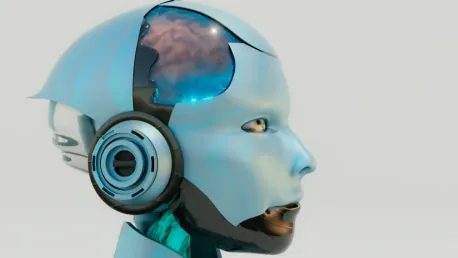In a notable shift within the artificial intelligence (AI) industry, companies are increasingly moving away from relying on OpenAI’s offerings, choosing to develop or collaborate on alternative AI models. Figure, a humanoid robotics company, recently announced its intention to develop its own in-house AI models, ending its partnership with OpenAI. This move signifies a broader trend among companies seeking to innovatively challenge and diversify away from dominant AI entities such as OpenAI.
Rising Costs and Alternatives
Case of Figure
Figure’s decision to cut ties with OpenAI and develop its own proprietary AI models marks a significant move in the AI space. Previously collaborating with OpenAI, the humanoid robotics company now aims to create state-of-the-art AI models independently. CEO Brett Adcock hinted at a momentous advancement in their technology that aims to push the boundaries of humanoid robotics. This innovation is promised to be unparalleled in the field, suggesting that companies are looking for specific and customizable AI solutions tailored to their unique needs.
The motivation behind Figure’s pivot lies in the increasing costs associated with utilizing OpenAI’s models, combined with a desire for greater control and customization of their AI solutions. Companies like Figure are demonstrating that with the availability of sophisticated cloud computing resources, it is feasible to develop highly capable AI models in-house. This new approach could set a precedent, encouraging other firms to explore similar paths and spurring innovation across the AI industry.
Cost Efficiency and Innovation
Stanford University and the University of Washington have recently showcased an efficient method for AI model training. Researchers from these institutions trained a highly capable “reasoning” model for under $50 using cloud resources, directly contrasting the traditionally higher costs linked to OpenAI’s models. This groundbreaking research emphasizes the potential for cost-effective alternatives and presents a promising direction for smaller companies and startups with limited resources.
The implications of this development are notable for the industry. Companies are increasingly realizing that they can achieve substantial AI capabilities without incurring the high costs previously thought necessary. This awareness is catalyzing a shift towards more economical and innovative AI solutions, prompting businesses to reconsider their dependencies and strategies. The landscape of AI development is becoming more diverse, driven by the goal of achieving cutting-edge results while maintaining cost efficiency.
Industry Trends and Notable Developments
Podcast Insights
The broader industry dynamics were discussed in a recent episode of TechCrunch’s Equity podcast, where hosts Kirsten Korosec, Margaux MacColl, and Max Zeff analyzed the current trends and movements within the tech sector. Among the key topics were significant new hires in startups and venture capital, collaborations between two space startups on advanced telescopes, and Elon Musk’s influence in integrating Silicon Valley’s technological agendas with federal government policies.
These discussions shed light on the broader shifts within the tech panorama, highlighting the interconnectedness of various innovations and strategies. The collaboration between two space startups, for example, signifies an important leap in space technology, driven by advancements in AI and machine learning. This partnership underscores the critical role of AI in enabling the next generation of technological discoveries and applications, both on Earth and in space.
Repercussions for OpenAI
As companies increasingly experiment with and adopt alternative AI models, OpenAI faces significant challenges in maintaining its market position and relevance. The discussions in the Equity podcast highlight that these trends are likely to impact OpenAI’s future relationships with industry partners who may seek more personalized, cost-effective solutions. The pressure is on OpenAI to adapt to this changing landscape by providing competitive offerings that align with the evolving needs of the market.
While OpenAI has been a frontrunner in AI research and development, the industry’s shifting tides suggest a movement towards decentralized innovation. Companies no longer view a one-size-fits-all approach as viable. Instead, they are pushing the envelope regarding customization and efficiency. By exploring alternatives to OpenAI’s models, they aim to maintain a competitive edge and foster groundbreaking advancements across various sectors.
Considering Future Directions
Evolving Dynamics
The evolving dynamics within the AI sector signal an era of diversification and experimentation, leading to transformative impacts on technology and business strategies. Companies are no longer adhering strictly to established AI giants but are instead embracing flexibility and innovation. This shift is creating a vibrant ecosystem where new players can emerge and specialized models can thrive, further advancing the pace of technological progress.
It is essential for companies to continually assess their AI strategies and explore the plethora of emerging options. By doing so, they can find solutions that are both economically viable and technologically superior, ensuring long-term benefits and sustained growth. Embracing this trend, businesses can capitalize on the innovative potential of AI models that are specifically tailored to their needs and challenges.
Future Prospects
In a significant shift within the AI industry, more companies are opting to move away from relying solely on OpenAI’s solutions, choosing instead to develop their own AI models or collaborate on alternative ones. For instance, Figure, a company specializing in humanoid robotics, recently announced its plan to create its own in-house AI models, which means they will no longer be partnering with OpenAI. This decision reflects a wider trend among businesses that seek to innovate and diversify, aiming to challenge the dominance of major AI entities like OpenAI. This shift is driven by the need for more tailored and specialized AI solutions, enhanced control over technology, and a desire to avoid over-reliance on a single provider. By developing their own AI models, companies can better meet their specific requirements and foster a competitive edge. As more companies prioritize unique AI capabilities, the landscape of the AI industry is expected to become more diverse and competitive, pushing the boundaries of what AI can achieve.









